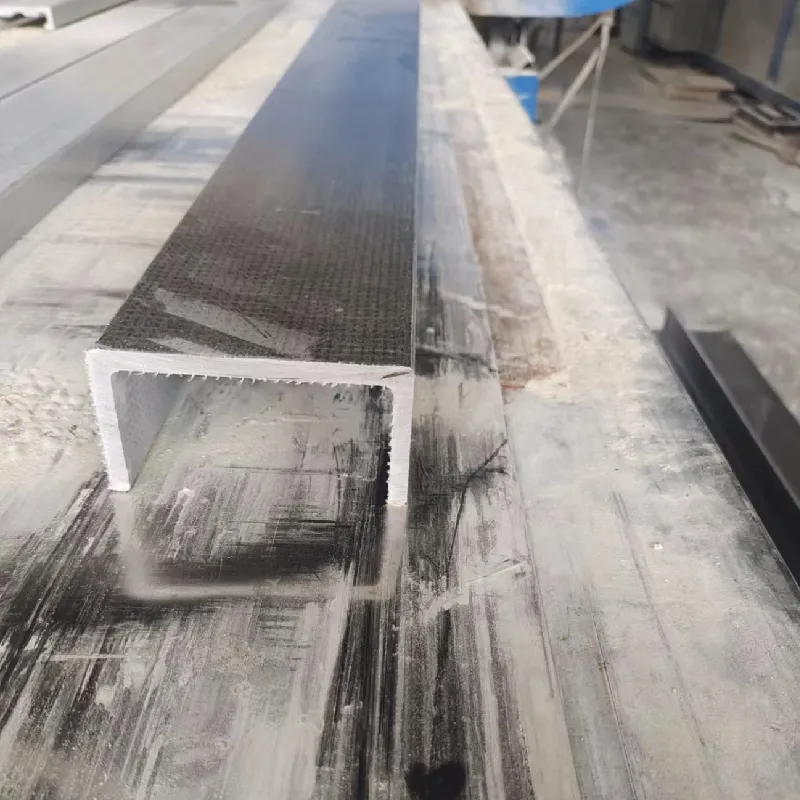loading...
- No. 9, Xingyuan South Street, Dongwaihuan Road, Zaoqiang County, Hengshui, Hebei, China
- admin@zjcomposites.com
- +86 15097380338
- Welcome to visit our website!
Enhancing Safety and Stability with Innovative Anti-Slip Grating Solutions for Various Applications
Understanding Anti-Slip Grating A Key Solution for Safety
In various industrial and commercial settings, safety is paramount. One of the most effective solutions to prevent slips and falls, which are common hazards, is the application of anti-slip grating. This article explores what anti-slip grating is, its benefits, applications, and how it contributes to creating safer environments.
What is Anti-Slip Grating?
Anti-slip grating refers to a type of flooring material designed to provide enhanced traction and minimize the risk of slipping. It is typically made from materials like fiberglass, aluminum, or steel, combined with a surface treatment or texture that increases friction. The design often incorporates various shapes and patterns, such as serrated edges or raised surfaces, which help in catching footfalls and preventing slips.
Benefits of Anti-Slip Grating
1. Enhanced Safety The primary benefit of anti-slip grating is its ability to reduce slip hazards. This is especially crucial in environments prone to wet, oily, or greasy surfaces, such as kitchens, factories, or outdoor areas.
2. Durability Anti-slip gratings are engineered to withstand heavy foot traffic, harsh weather conditions, and the wear and tear of industrial use. Materials like fiberglass are resistant to corrosion, while steel and aluminum provide strength and longevity.
3. Versatility Available in various sizes, shapes, and materials, anti-slip grating can be customized to meet specific needs. It can be used in stairways, walkways, platforms, and even ramps, making it a flexible solution for diverse applications.
4. Ease of Maintenance Many anti-slip gratings are designed for easy cleaning, reducing the time and resources needed to maintain a safe environment. Their rugged surfaces can often handle frequent washing and exposure to chemicals without deteriorating.
anti slip grating

5. Cost-Effectiveness When compared to the potential costs associated with slip and fall accidents, investing in anti-slip grating can lead to significant long-term savings. By mitigating the risk of injuries, companies can avoid legal expenses, insurance premiums, and lost productivity.
Applications of Anti-Slip Grating
Anti-slip grating is widely used across various sectors, including
- Industrial Settings Factories, warehouses, and manufacturing plants benefit from anti-slip gratings on floors, walkways, and loading docks to ensure employee safety.
- Commercial Spaces Restaurants, grocery stores, and shopping centers utilize these gratings in kitchens, bathrooms, and entrance areas where moisture is prevalent.
- Public Infrastructure Parks, playgrounds, and public transportation systems often incorporate anti-slip grating in their design to ensure public safety in high-traffic areas.
- Marine Applications Boats, docks, and marinas utilize anti-slip grating to prevent slips in wet conditions, ensuring safer operations for almost everyone involved.
Conclusion
As we continue to navigate through environments that require safety and efficiency, anti-slip grating stands out as a critical component in risk management strategies. By enhancing traction, durability, and versatility, anti-slip grating not only fosters a safe working environment but also contributes to the overall efficiency and productivity of operations. Investing in this technology is a proactive approach to protecting employees and customers alike, ensuring peace of mind in a variety of settings. With the right implementation, businesses can significantly reduce the likelihood of accidents and create a safer atmosphere for all.
-
GRP Structures: The Future of Lightweight, High-Performance EngineeringNewsJun.20,2025
-
FRP Water Tank: High-Performance Storage for Corrosive and Clean Water SystemsNewsJun.20,2025
-
FRP Square Tube: The New Industry Standard for Chemical and Structural ApplicationsNewsJun.20,2025
-
FRP Pultruded Profiles: The Ultimate Choice for Lightweight Structural StrengthNewsJun.20,2025
-
FRP Handrails: The Safer, Smarter, and Stronger Choice for Modern InfrastructureNewsJun.20,2025
-
FRP Grating: The Smart Solution for Durable, Lightweight Industrial FlooringNewsJun.20,2025
-
Why Choose a Galvanized Water Tank for Your Storage NeedsNewsMay.21,2025
